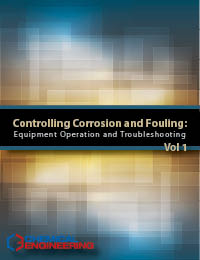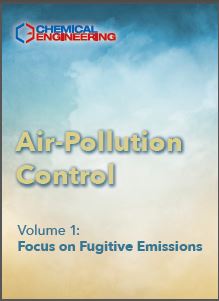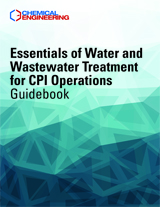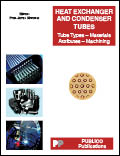Description
Delivered in a PDF. 206 pages.
Corrosion and fouling are unavoidable in chemical process operations, yet both can wreak havoc in many ways. If left unchecked, corrosion and fouling can negatively impact process operations, depress conversion rates and product yield, reduce energy efficiency. Meanwhile, corrosion-related damage, and fouling and buildup in process equipment, can lead to unscheduled downtime for maintenance, and in extreme cases, catastrophic failure of process equipment. All of this can create safety issues for plant personnel and neighboring communities, and reduce the overall profitability of the process.
This guidebook contains a collection of practical engineering articles related to corrosion-related issues in specific types of equipment, originally published in Chemical Engineering. Several articles focus on fouling and corrosion issues in aboveground and buried piping. Other articles provide practical guidance for managing and monitoring corrosion in pressure vessels and reactors, heaters, boilers, pumps, condensers, gas turbines and flares.
Contents Include:
Column Revamps: From Outside to Inside
Some of the many things to consider for this complex task are presented here
Microreactors: Lessons Learned From Industrial Applications
Implementing microreactors in chemical production is quite a challenge. How these challenges can be met is described here
Steam-System Water Preparation
Steam-System Water Preparation
Thermowell Installation
Polymer-based Piping
Controlling Membrane Fouling
Point-Level Switches for Safety Systems
Industries that manufacture or store potentially hazardous materials need to employ point-level switches to protect people and the environment from spills
Design Underground Piping For Safety
Buried systems bear a number of unique risks and require special considerations, including those related to soil characteristics and seismic loads
Inspecting Underground Piping
First consider noninvasive methods to determine where excavation is — and isn’t — necessary
Flare Consolidation Considerations
Consolidating multiple flares can help mitigate emissions and maintenance
Thermal Design Guidelines for Optimizing Shell-and- Tube Heat Exchangers
Ensuring optimal performance of shell-and-tube heat exchangers requires knowledge of the controlling fluid, correct exchanger geometry and configuration, as well as proper fluid placement
Superheater Problems in Steam Generators
Knowing the features of a good boiler will prevent problems associated with a poor design
Pressurized Piping: Sampling Steam and Water
Without proper systems, analysis of steam and water chemistry can provide erroneous results — with costly implications
Pressure-Vessel Quality Control Requirements
Understanding what is required for boiler and pressure-vessel manufacturers can help scheduling and cost assessments
Flooded Condenser Controls: Principles and Troubleshooting
Flooded condensers are the prime tower pressure-control methods for total condensers that generate only liquid products, and although these control methods can be troublesome, a good understanding of their principles will help achieve improved, trouble-free operations
The Shotgun Approach
Removal of Fouling Deposits on heat transfer surfaces in Coal-Fired Process Heaters & Boilers When conventional soot blowers are inadequate, an automated shotblasting system offers a powerful solution
Gas Turbines: Design and Operating Considerations
Follow these engineering recommendations to improve gas turbine operation and performance while reducing operating costs
A New Approach to Corrosion Monitoring
The impact of corrosion on assets and processes is great. Advances in technology allow engineers to assess corrosion in a whole new way, with realtime monitoring and the ability to link deterioration with process conditions
Compact, High-efficiency Heat Exchangers: Understanding Fouling
Engineers should plan to avoid fouling of heat exchangers instead of reacting to it
An Up-Close Look at Electropositive Filtration
Electropositive filters take advantage of surface-charge effects to filter nanometer-sized particles. Provided here is an overview of how they work and where they can be used
Implementing a Corrosion- Under-Insulation Program
CPI facilities need to put in place a systematic program for preventing and mitigating corrosion under insulation
Shell-and-Tube Heat Exchangers: The Design Cycle
Following this step-by-step approach will ensure that the heat exchanger will perform as required when finally fabricated
Beware of Flow- Accelerated Corrosion
Operators of steam-generating systems should understand flow-accelerated corrosion and the potential problems it can cause
Piping-System Leak Detection and Monitoring for the CPI
Eliminating the potential for leaks is an integral part of the design process that takes place at the very onset of facility design
Unlocking the Secrets of Plate-and-Frame Heat Exchangers
An understanding of the design, sizing, specification and installation of plate-and-frame heat exchangers is necessary to evaluate vendors’ proposed designs
Reliable Operation and Sealing of Agitators
Mechanical seals, as required by most vessel agitators, are systems sufficiently complex to warrant a good understanding by engineers and appropriate training for operators
Piping Design for Potentially Lethal Chemicals
Integrity and reliability are critical for piping and equipment that handle chemicals with extreme health hazards
Optimizing Flare Operation Through Proper Design
Flare problems are often caused by the seal systems that are designed to control air ingress. Follow these troubleshooting guidelines to improve design and ensure safe, reliable flare operation
Piping Codes: What the CPI Engineer Should Know
An overview of the codes and standards that are most pertinent to chemical processing facilities
Magnetically Driven Pumps: An overview
Understanding sealless pump technologies and their potential applications
Troubleshooting Tube-Deterioration Mechanisms in Direct-Fired Heaters
A practical step-by-step guide for reducing future tube failure




